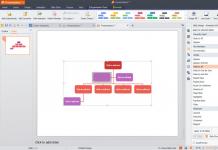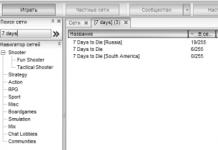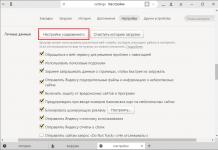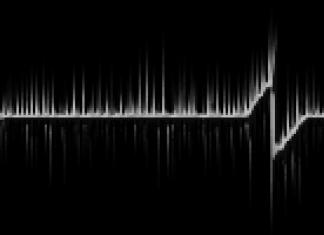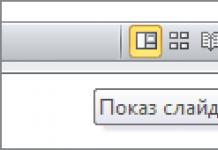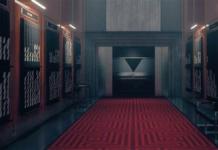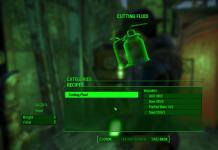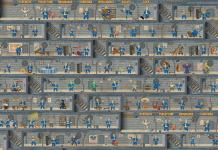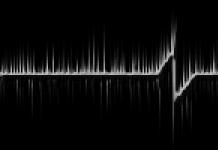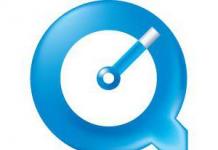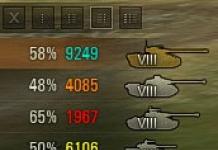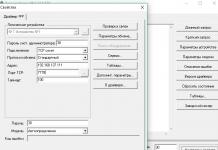21.02.2014
I would like to say thank you to the esteemed Helpix editors and express special gratitude to Georgy Kiselev for spending the time checking my “careless” attempts to write a review!!! For that chance that others don't give...
How long have you had this device?
About a month.
Do you use it until now? If not, why did you break up with him?
I use it and will continue to use it until the battery runs out of life.
How did you get this device? What criteria were used to select it? Where and how much was it purchased?
I didn’t consider buying a new phone, since I was completely satisfied with my old, trusty SonyEricsson Hazel push-button slider as my main phone and really Die Hard! It is almost 3 years old, the battery lasts up to 3 days, there is not a single scratch on the screen, it looks like new, with the exception of the back cover. It was covered with carbon fiber.
I once went into an MTS communication salon just to look and “twist” in my hands the much-advertised Nokia Lumia 1020 with a 41 megapixel camera. The camera is, of course, super. Naturally, I paid attention to the Sony line, as I was convinced of the quality of Sony Ericsson from my own experience. The Sony Xperia C 2305 smartphone immediately attracted my attention with its appearance and price. Since my previous phone was a push-button slider, I had no experience working with a smartphone, and even with a touch screen, so that they wouldn’t laugh at me (it’s 2014), I completely entrusted the demonstration of the phone to the salon consultant. And “a fish was hooked.” I immediately liked everything about this smartphone. Therefore, after leaving the salon, I quickly rushed home, where my husband and I went to the website to read reviews about this smartphone. Based on the selection criteria, we were unable to compare this model with one similar in quality, functionality and price. Everything I needed was in this smartphone:
1. Capacious battery. The phone will be actively used in terms of calls, Internet, email, camera.
2. Support for 2 SIM cards. I'm tired of using two phones.
3. Ability to view letters and documents from email.
4. Good camera. Mainly for shooting documents and price tags.
5. High-quality speaker sound. I really love music.
6. Ability to record a telephone conversation during a conversation. Since I spend most of my time on the road, driving, when accepting orders from clients, I record their requests on a voice recorder (naturally, warning me that the conversation is being recorded). This is very convenient, you don’t have to constantly stop and write down orders in a notepad, and upon arrival at the office, I simply rewrite the orders or transfer them via MMS message to the office manager for processing. This was possible in my old SonyEricsson Hazel phone, but my husband’s HTC Explorer smartphone does not have this option. To record, he downloaded an application that only works with speakerphone, which is not entirely convenient.
Two days later, having sacrificed the family budget, I became the owner of a white Sony Xperia C 2305 smartphone, purchased at an MTS communication store for 11,990 rubles.
What do you like? Strengths, advantages.
- Appearance
Very beautiful design and impeccable build quality. My chosen one is white, the body is made of plastic. The back cover is pearlescent.
On the sides along the entire perimeter there are metal inserts-plates. Convenient location of the power/lock, volume and camera buttons, as well as connectors (power/sync on the left, for the headset on the top). The connectors, however, are without plugs.
I would like to note right away that the phone fits perfectly in my female hand, and I can successfully reach all the keys, display and touch buttons on the screen with one hand. Touchscreen phones used to scare me, but now that I got one, I realized how convenient it is! And I don’t miss the buttons!
The microphone, earpiece and music speaker located at the back are protected by a mesh. Above the screen in the upper right corner is the front camera and light sensor.
Below the screen there is a notification indicator, which does not work when STAMINA mode is on. I’ll write about the regime later. As banal as it may sound, once in 2004 I had a Siemens M55 phone. When there was a call, missed calls and SMS, it had a red light indication on the sides. Therefore, the presence of an indicator in the smartphone was very pleasing!
- Package
When purchased, the phone was packed in a regular colorful box, on the front side there is an image of the phone in white, and on the back side the phones are shown in three colors: black, purple and white. The delivery set included a charger plug, a USB cable for charging and synchronization, a wired stereo headset without a clothespin, a start-up manual in 2 copies in Russian and foreign languages, and a warranty card.
There is no user manual, but you can download it from the official website directly to your phone, and I advise you to read it right away, a lot of interesting things are written there.
You can also read in the manual how to open the phone's cover. It was difficult for me to open for the first time, there are no visible holes to catch on. But once you get used to it, it opens easily. How I open it - watch the video:
Under the cover of the phone there is a non-removable battery, two slots for micro-SIM cards and a slot for a flash drive. In the salon they immediately cut my regular SIMs into micro ones for 90 rubles each.
Additionally, I purchased a 32 GB class 10 microSD memory card and a black flip case.
- Battery
Battery capacity 2390 mAh, non-removable. From the first days of purchase, I used the phone to its full capacity to reveal all the capabilities of the device. Charging the phone is enough for two days of phone operation in intensive mode. At the same time, Wi-Fi was constantly turned on (if at home) or mobile Internet (if at work), downloaded various applications, took photos and videos, sent MMS, and at the same time made and answered calls. After three weeks, the battery charge lasted for two and a half days. During these days I only used calls, SMS, Wi-Fi, photos, listened to music for about 2 hours a day, downloaded 5 songs and watched a cartoon lasting 25 minutes, set up DLNA. I think this is a good indicator for the battery, considering that 2 SIM cards and a 5-inch screen are active. Almost 50% of the battery is occupied by communication with the network, so I turn on Flight mode at night.
I would like to offer some tips on how to extend the life of your battery. (My old Hazel still holds a charge for up to 3 days with heavy use.) The most important thing is to charge it correctly. Wait until about 5% charge remains. Charge your phone fully. Avoid using your phone while charging. Try to use your old phone for calls (for the first three cycles). Wait until fully charged. Then you use the phone until the next 5% battery discharge. Try not to recharge your phone or connect it to your computer via a USB cable. And so three periods of discharging and charging. Yes, this is difficult to do when you have a brand new phone, but believe me, your patience will be justified in the future by the good battery life of your phone!
In this phone I turned on the STAMINA mode. The principle of operation of the mode is that when the screen is turned off, mobile data transmission and Wi-Fi are disabled. You can add applications that become active in standby mode when the mode is turned on. Turned on energy saving mode. If the charge level is below 30%, this mode turns on automatically and energy-saving settings come into effect, which can also be adjusted.
If I don't use Bluetooth, Wi-Fi, mobile Internet or one of the SIM cards, I turn them off. At night, as I already wrote, I launch the Flight mode. All settings for disabling and enabling can be displayed on the desktop for quick access (except for disabling the SIM card). For the SIM card in the first slot, I chose the preferred GSM network, and if I need mobile Internet, I turn on 3G. Set the apps used to sync email, calendar, and contacts to manual sync mode. The screen brightness was set to “adjust according to the light level”, because in the sun, when the brightness is reduced, the data on the screen is difficult to see.
- Screen and camera
TFT screen, 5-inch with multi-touch 4 touches with a resolution of 960x540 pixels. The screen has wide viewing angles and rich colors. I really like it, everything is bright and colorful!
In the bright sun it is difficult to see, but it is legible if, as I already wrote, you set it to “adjust according to the light.”
The 0.3 MP front digital camera with VGA resolution can be used exclusively for Skype. The main one is 8 megapixels with a highly sensitive Exmor RS sensor, as written in the instructions. It is also said that thanks to this sensor, it can take clear photos and videos even in low light conditions. As for photography, such clear pictures can only be taken during daylight hours. I even called Sony Mobile support. They advised me to do a factory reset and reinstall the update. After that it got better, but still, in poor lighting, the clarity of objects in the distance is not enough! Pictures are taken with a resolution of 3264x2448.
Photos after noon:
Photo under artificial light:
In low light, everything is also bright and beautiful, but the sharpness in some places leaves much to be desired. And if the hand twitches, then everything is blurry.
Shooting in the evening:
And here at night:
Shooting documents is clear.
In general, it depends on who. As I already wrote, I have a camera, I don’t take pictures at night, so the Xperia C camera completely suits me.
There is a flash and autofocus, HDR support.
Regular photo without flash:
Photo with HDR enabled:
With the function turned on, the pictures are brighter. It is not yet clear to me what is good about this function.
You can select the main camera, front camera, video camera or front video camera, graphic effect, shooting conditions. There are functions for recognizing smiling faces (when you smile, the camera detects this and automatically takes a photo) and “self-portrait”. A very convenient function for those who like to take pictures of themselves. The voice will tell you how best to get into the lens for a good photo. You can also select “two” and “two next to each other”. And if you turn on the face retouching mode, then in general you will look flawless in the photo (without pimples and wrinkles), then you won’t have to photoshop! In one of the test shots, the camera retouched my eyebrows and part of my bangs. But mostly, it turns out well.
After taking the photo, you can edit it: crop it, place it in a frame, change the background, put a mark, sign it with printed text, and even draw or write something on it with your own hand!
Videos can be shot with FullHD 1920x1080 resolution. Then you can watch it in HD resolution on your TV. There are no delays or changes in sharpness (see video). You can select night mode and backlight, turn on the image stabilizer.
During video shooting, you can take pictures with the main and front cameras. The main camera is limited to 2 megapixels.
Example of video and photos during video shooting:
The video recording sound is average. You can also choose where to save photos and videos.
Video examples:
- Music and sound
The sound, thanks to the Walkman player, is excellent! The sound is clear and loud with bass (after firmware update). There are settings and additional sound improvement technologies. But they can be controlled if ClearAudio+ is turned off. And if this function is enabled, the sound adjustment will occur automatically. I would like to note that when ClearAudio+ and Clear Phase are turned off, but the xLOUD function is turned on, the sound of the external speaker and the ringer sound becomes much louder. The TrackID application allows you to determine the melody by sound by finding data via the Internet. To trim ringtones, I downloaded the free Ringtone Slicer Beta application. Saves the trimmed melody directly to a flash drive, the melody can be set to a call, contact melody, alarm clock. There is also an FM radio that works with a connected headset. The reception is average. Additionally, I downloaded a free Internet PC radio application from the Play Market. I use it.
- Telephone
Supports 2G GSM and 3G WCDMA networks. There is Wi-Fi Direct mode, Bluetooth v 4.0, there is DLNA and USB (OTG), GPS/A-GPS - it works great. Can be used as a navigator.
The phone supports two SIM cards. There is only one radio module, so there is only one conversation, the second SIM card becomes inaccessible. There is a Dual Sim setting. Forwarding from one SIM to another is established to always be in touch. You can also set call forwarding yourself in the call settings and to other SIMs, for example, in another phone. In the SIM card settings, you can set priorities separately for calls and data transfer for each SIM. If you set calls and SMS from 1 SIM in the settings, then before each call the phone will not ask which SIM card to call from, but will always call with the specified SIM. You can also set priorities by time, for example, from 9 to 13 calls and SMS will be from 2 SIM, and data transfer from 1 SIM. The SIM switch is located in the top panel, it is small and not convenient to use, so I moved the icon to the desktop.
3G will only be in the first slot, in the second only GPRS/EDGE. Therefore, it is best to insert a SIM into the first slot to work with the Internet. I configured the Internet on both slots to receive and send MMS. True, the automatic settings did not load, I had to configure them manually. The Sony Mobile hotline specialist helped. Phone 8-800-100-80-22.
I transferred contacts from my old phone via Bluetooth. Selected all contacts - transfer using Bluetooth. And on Sony I simply imported a file with contacts. Each contact can be assigned a ringtone, a picture, assigned to a group, created a new group, or sent an SMS. In this case, melodies and pictures do not have to be moved to the phone’s memory; everything is installed from a flash drive. Contacts are searched by both numbers and names. Contacts without phone numbers are displayed. An incoming call from a person can be rejected with an instant SMS message, for example, “I will call you back.” The lock key can be configured to end a conversation. It's convenient for me.
You can mark a contact as a favorite and it will appear separately in your favorites.
You can also display it on your desktop as a widget or shortcut.
SMS messages are output from conversations.
I chose the extended keyboard, which displays numbers and symbols.
I liked the voice typing feature. This is for those who don’t like to write SMS - now you can tell them off! If you dictate a sentence and at the end you say “period,” then a period is added. It happens, of course, that the word “dot” is written instead of a period.
- Software and Performance
Operating system Google Android version 4.2.2. The MT6589 MediaTek processor, 4-core Cortex-A7 1.2 GHz, has 1 GB of RAM and PowerVR SGX544MP graphics accelerator. Supports memory cards up to 32 GB.
The phone doesn't slow down. Music downloads instantly:
Watch the movie online:
I haven’t played serious games, only these:
There are seven desktops on the screen. Application icons on desktops can be added, selected and sorted to your taste, and combined into created folders. You can remove shortcuts to unused applications from desktops. Applications can be moved to a flash drive (not all). Those applications that you do not need at all can be deleted in the settings. I clicked "uninstall updates". Of course, they were not completely deleted, the shortcuts remained, but the memory was freed up, and the shortcuts were placed in one created folder so that they would not get in the way. I would like to note right away: if you do not want unused applications to be constantly updated, in the Play Market settings, in auto-update, check the “never” box. If there is an update for games and applications, the system will definitely warn you, and you yourself will be able to update only the applications or games you need.
You can select a desktop background, install live wallpapers (although they will drain the battery faster):
Apps can be downloaded immediately or moved to an SD card later.
Separately, there is a history of recently used applications and a menu of small applications. There is a voice recorder here and you can take a screenshot. You can also take a screenshot (you all know, of course) by simultaneously pressing and holding for 2 seconds. lock buttons and volume keys. You can only use one small application on the main desktop.
Also, any free application you are interested in can be downloaded from the Play Market. I would never have thought that at my age I would be able to download Talking Tom, feed him, dress him, change the interior in the living room, bedroom, and on top of all this, play the toys offered in the application to earn money for a beautiful skin, etc. Even the most funny.
On the top line of the screen there is a menu with quick access to switch SIM, sound/vibrate/no ringer, turn Bluetooth on/off, Wi-Fi and settings. Various alerts, downloads, etc. are also displayed. This menu appears when you pull down the curtain with one finger.
If you swipe down from the top of the screen with two fingers, a curtain with the necessary tools will open.
What's not to like? Weaknesses, shortcomings.
I don't like the front camera, 0.3. On Skype the picture is not of very good quality, they could have made 2 or at least 1.3. But if someone doesn’t use Skype, then the front camera is not needed at all. Self-portraits are not bad from the main camera using the “self-portrait” function.
Non-removable battery.
The battery discharge from 30% immediately drops to 15%. The new update did not fix it. I'll wait for the next one. But this rapid drop occurs when Wi-Fi is turned on.
Quiet sound when recording video. While I was once again correcting my story, I discovered the reason for recording the quiet sound. It turns out that if you set the sound settings for the camera, multimedia and games to full, then the recording sound will be quite loud. But if you went into the game and made the sound quieter, it will automatically change in the camera, and if you don’t increase it, the recording will be quiet.
In the phone book, contacts are displayed only with a name; there is not enough visibility of phone numbers.
Before updating the firmware to version 16.0.B.2.6, there were shortcomings that were corrected after the update:
- The proximity sensor was constantly triggered when you touched it on the screen. After the update, it only works when there is a call, or when a call comes in when you bring the phone to your ear;
- melodies set for a call or contact disappeared when the phone was rebooted or connected to a computer. The same thing happened with application icons installed on the desktop that were installed on a flash drive, they also disappeared. In order not to re-configure the desktops, I transferred all applications to the device’s memory. After the update, nothing is lost; downloaded applications are immediately saved to the USB flash drive;
- The sound in the headphones and the ringing sound were quiet. After the update the problem is solved. The volume has increased significantly!
I want to give some advice right away. Update your phone instantly via your computer using the Sony PC Companion app. When you connect your phone via a USB cable to your computer, your phone will immediately ask you to install PC Companion on your computer. If already installed, click skip. Follow the wizard's instructions. Once the application is installed, the program will offer to update your phone. Also follow the prompts according to the instructions, just do not turn off the phone so as not to disrupt the download and installation. I was unable to update directly on my phone via the Update Center. When checking for new updates on the phone through the Update Center, it is reported that the latest system updates are already installed on the device, but when connected to a computer, PC Companion immediately suggested updating the phone. Important! Before updating, make sure that the battery charge is at least 50%!
2 years ago
Convenient to browse the Internet, holds charge well
2 years ago
large screen, normal resolution, light, thin, glass and scratch-resistant body
2 years ago
Stylish design, doesn't slow down for a second
2 years ago
Big phone
2 years ago
everything is very good, how many times have I fallen and survived, how many times have I filled it with water and it’s fine and the sensor and everything works doesn’t get stuck, it’s only when messages come in on social networks and the light bulb just stops working, and when you look at the photos and listen to music it works fine
2 years ago
Well, as everyone else writes the screen, everything is fine
2 years ago
Large screen, 2 SIM cards, good sound quality, camera button and autofocus.
2 years ago
Brand.ergonomics./slim body/.
2 years ago
Large screen, works quickly, sensitive touchpad after the update, photos and videos are good, I really like the back bumper cover
2 years ago
Camera, Battery
2 years ago
2 years ago
The camera is no good, despite its pixels the photos suck, the old Nokia took better photos. I want to press a button and get a high-quality photo - it’s inconvenient to take pictures in Sonya, it’s not clear whether you took it or not, it takes a long time to focus. Even during the day the photos are somewhat unclear
2 years ago
I bought Rostest, after 3 months of careful use (I don’t play games, I go to verified sites)) it froze. And then the firmware crashed. I reflashed it at my own expense because I needed the phone urgently. But I didn’t have time to wait for the warranty for weeks. As a result, it crashed 1500rub. upset. I no longer trust the reliability of SONY.
2 years ago
The keyboard is replaced with the native one, the melodies set for calls may disappear. I can't install widgets on the screen. Camera. Inconvenient switching between SIM cards - all this is eliminated by installing applications into the phone's memory.
2 years ago
very bad camera, it shoots video like my wife’s Samsung E720, it’s a little better quality
2 years ago
But no one said about the memory, everything is very difficult, there is not enough memory, they write that there is not enough memory. although the boxes say 4 GB. I can’t figure out anything on the internal memory... So the screen and the camera are not so watery, there’s still nowhere to plan. I'm disappointed in this model, I think I'll change it to another model
2 years ago
Out of habit, it is inconvenient to carry a phone of this size in your pocket. Noise in footage taken in low light. Out of the box, YouTube video playback quality is low. The user interface is less user-friendly than the LG L7 II Dual.
2 years ago
Price? alas. photos. and video. not up to par. expected better from Sony. compared with fly vista. of course, plus a separate photo button.
2 years ago
Pre-installed applications are too complicated and unnecessary
2 years ago
The back cover was deformed, gaps appeared, and stickers on the sides came off. The battery has to be charged in two stages: from the beginning to about 67 percent and the charging turns off, pull it out and insert it again, and only after that up to 100. Previously, after turning it off and on, the icons disappeared, after updating the software, the icons stopped disappearing, now the wallpaper flies off. The dialer for working with 2 SIM cards is inconvenient, I had to download a paid one. The memory is littered with a bunch of unnecessary programs that cannot be deleted. and the organization of working with memory is generally disgusting.
In today's world, all sorts of high-tech devices are updated surprisingly frequently. This trend is also typical for the Japanese company Sony. In particular, a few months ago another new product from this manufacturer appeared on the domestic market. It was the C2305 smartphone. Being a not very complex device from a technical point of view, it fully meets the requirements of modern consumers and at the same time is characterized by a relatively low cost.
general description
Durable plastic is used to produce the model. Only the on/off button and the camera rim are made of metal. The user can choose from phones in black, white and purple colors, which has already become a characteristic feature of the line called Xperia C. The developers covered the front panel with protective glass. It houses a five-inch touch screen, microphone, speaker and The manufacturer has equipped the left side of the Sony C2305 with convenient buttons for activating the camera and power. On the opposite end there is only a microUSB port. The hole for connecting the lanyard is located at the bottom. The back of the device has a slightly concave shape. This is where the speaker, main camera and auto focus light are located.
In general, the design of the new product does not contain any unnecessary elements. The size of the model is 141.5x74.15 mm in height and width, respectively. Its thickness is only 8.88 mm, which is a pretty good indicator that many users pay attention to.

Ergonomics
Stylish and at the same time elegant appearance makes the Sony C2305 more attractive. Reviews from device owners indicate that it fits very comfortably in the hand. Moreover, thanks to the matte surface of the back cover and rounded corners, the phone does not slip out of your hands even during a long call. A rather interesting design solution that gives the device neatness and elegance is what many users call the side edges made of glossy plastic. It should also be noted that a new design was used for the model’s case, thanks to which it appears as if there is no back cover. Because of this, opening a smartphone is not so easy.
Connection
The C2305 phone supports two SIM cards, switching between them is convenient and quick. In addition, when talking on one of them, the second one is automatically turned off. The device supports Wi-Fi and Bluetooth 4.0, and navigation is carried out using the A-GPS system. As practice shows, reliable communication and fast exchange with paired devices occurs without failures of wireless technologies. Basic modification programs include the Google Talk application, with which you can send chat messages.

Display
As noted above, the model has a five-inch touch monitor. Its resolution is 960x540. This figure cannot be called impressive, so there can be no talk of ideal image quality - small details and fonts do not look quite smooth. Additional second-generation Schott glass provides good protection for the device from various external influences. The sensor is capable of recognizing up to five touches simultaneously, and its sensors quickly respond even to light pressure. Navigating between apps, menu options, zooming and scrolling is smooth and responsive.
Camera
The eight megapixel camera located on the rear side can easily be called one of the main advantages of the Sony C2305 model. Its overview is quite extensive. At the same time, thanks to the use of the Exmor RS high-sensitivity sensor, excellent image quality is ensured even in poor lighting conditions. The camera has a number of different settings and modes, which allows you to take photos with amazing detail, brightness, color rendition and clarity. “Self-portrait” became a rather interesting and unique function. Its essence is that you just need to point the camera lens at yourself, after which the device itself will take an excellent photo using voice prompts. Among other things, the focusing system also boasts the presence of several modes. A separate button on the case will allow you to photograph objects even when the smartphone is locked.

Performance
The Sony C2305 model has a processor with four cores, the clock frequency of each of which is 1.2 GHz. In addition, the device’s good operating speed is ensured by 1 GB of RAM. All programs, regardless of their size, start and run without delay. As for the permanent memory, its size is only 4 GB, but if necessary, you can install an additional microSD card. The device is just perfect for web surfing.
Menu and controls
Like many other modern modifications, the Sony C2305 smartphone runs on the Android 4.2 Jelly Bean operating system. It should be noted that its interface is quite successfully adapted specifically for this device. The user can configure the screen settings independently. The menu provides access to the phone book, applications (standard and installed additionally), a list of messages, an Internet browser and, of course, the Google Play application. Touch control buttons for switching between programs and returning to the home page are located at the bottom of the monitor. As for information regarding the current status of the phone, including network signal quality, wireless communications, current time, battery charge, and message notifications, it is displayed at the top.

Autonomy
The Sony C2305 is powered by a built-in rechargeable battery with a capacity of 2390 mAh. Taking into account the modest indicators of the screen, which were discussed earlier, this volume is more than enough. A clear confirmation of this is the fact that even with intensive use, the smartphone will be discharged only after a day. Moreover, the device has a special energy-saving mode, which, when activated, automatically turns off all unnecessary applications that consume a lot of energy. This allows you to increase the operating time of the device by two to three times. In continuous talk mode, a full battery charge will last about 10 hours, while in standby mode - for 588 hours.

conclusions
To summarize, we should name the main advantages and disadvantages of the Sony C2305. The main advantages of the model, experts include a stylish appearance, a unique body design, an eight-megapixel camera, a processor and support for two SIM cards. As for the weak points of the device, it is the low display resolution and the frequent appearance of glare on the glossy surface under bright lighting conditions. In general, for its price segment (in domestic stores you need to pay about 10 thousand rubles for a phone), the device can confidently be called a pretty good choice. It is capable of providing excellent communication quality and easily copes with a wide variety of tasks. Moreover, despite its relatively low cost, the phone has quite powerful characteristics that meet modern requirements for devices of this kind.
Information about the make, model, and alternative names of the specific device, if available.
Design
Information about the dimensions and weight of the device, presented in different units of measurement. Materials used, colors offered, certificates.
| Width Width information - refers to the horizontal side of the device in its standard orientation during use. | 74.2 mm (millimeters) 7.42 cm (centimeters) 0.24 ft (feet) 2.92 in (inches) |
| Height Height information - refers to the vertical side of the device in its standard orientation during use. | 141.5 mm (millimeters) 14.15 cm (centimeters) 0.46 ft (feet) 5.57 in (inches) |
| Thickness Information about the thickness of the device in different units of measurement. | 8.9 mm (millimeters) 0.89 cm (centimeters) 0.03 ft (feet) 0.35 in (inches) |
| Weight Information about the weight of the device in different units of measurement. | 153 g (grams) 0.34 lbs 5.4 oz (ounces) |
| Volume The approximate volume of the device, calculated based on the dimensions provided by the manufacturer. Refers to devices with the shape of a rectangular parallelepiped. | 93.44 cm³ (cubic centimeters) 5.67 in³ (cubic inches) |
| Colors Information about the colors in which this device is offered for sale. | White Black Purple |
SIM card
The SIM card is used in mobile devices to store data that certifies the authenticity of mobile service subscribers.
Mobile networks
A mobile network is a radio system that allows multiple mobile devices to communicate with each other.
Mobile communication technologies and data transfer speeds
Communication between devices on mobile networks is carried out using technologies that provide different data transfer rates.
Operating system
An operating system is a system software that manages and coordinates the operation of hardware components in a device.
SoC (System on Chip)
A system on a chip (SoC) includes all the most important hardware components of a mobile device on one chip.
| SoC (System on Chip) A system on a chip (SoC) integrates various hardware components, such as a processor, graphics processor, memory, peripherals, interfaces, etc., as well as the software necessary for their operation. | MediaTek MT6589 |
| Technological process Information about the technological process by which the chip is manufactured. Nanometers measure half the distance between elements in the processor. | 28 nm (nanometers) |
| Processor (CPU) The primary function of a mobile device's processor (CPU) is to interpret and execute instructions contained in software applications. | ARM Cortex-A7 |
| Processor size The size (in bits) of a processor is determined by the size (in bits) of the registers, address buses, and data buses. 64-bit processors have higher performance compared to 32-bit processors, which in turn are more powerful than 16-bit processors. | 32 bit |
| Instruction Set Architecture Instructions are commands with which the software sets/controls the operation of the processor. Information about the instruction set (ISA) that the processor can execute. | ARMv7 |
| Level 1 cache (L1) Cache memory is used by the processor to reduce access time to more frequently used data and instructions. L1 (level 1) cache is small in size and works much faster than both system memory and other cache levels. If the processor does not find the requested data in L1, it continues to look for it in the L2 cache. On some processors, this search is performed simultaneously in L1 and L2. | 32 kB + 32 kB (kilobytes) |
| Level 2 cache (L2) L2 (level 2) cache is slower than L1 cache, but in return it has a higher capacity, allowing it to cache more data. It, like L1, is much faster than system memory (RAM). If the processor does not find the requested data in L2, it continues to look for it in the L3 cache (if available) or in RAM memory. | 1024 kB (kilobytes) 1 MB (megabytes) |
| Number of processor cores The processor core executes software instructions. There are processors with one, two or more cores. Having more cores increases performance by allowing multiple instructions to be executed in parallel. | 4 |
| CPU clock speed The clock speed of a processor describes its speed in terms of cycles per second. It is measured in megahertz (MHz) or gigahertz (GHz). | 1200 MHz (megahertz) |
| Graphics Processing Unit (GPU) The Graphics Processing Unit (GPU) handles calculations for various 2D/3D graphics applications. In mobile devices, it is most often used by games, consumer interfaces, video applications, etc. | PowerVR SGX544MP |
| Number of GPU cores Like a CPU, a GPU is made up of several working parts called cores. They handle graphics calculations for various applications. | 1 |
| GPU clock speed Running speed is the clock speed of the GPU, measured in megahertz (MHz) or gigahertz (GHz). | 286 MHz (megahertz) |
| Amount of random access memory (RAM) Random access memory (RAM) is used by the operating system and all installed applications. Data stored in RAM is lost after the device is turned off or restarted. | 1 GB (gigabytes) |
| Type of random access memory (RAM) Information about the type of random access memory (RAM) used by the device. | LPDDR2 |
| Number of RAM channels Information about the number of RAM channels that are integrated into the SoC. More channels mean higher data rates. | Single channel |
| RAM frequency The frequency of RAM determines its operating speed, more specifically, the speed of reading/writing data. | 533 MHz (megahertz) |
Built-in memory
Each mobile device has built-in (non-removable) memory with a fixed capacity.
Memory cards
Memory cards are used in mobile devices to increase the storage capacity for storing data.
Screen
The screen of a mobile device is characterized by its technology, resolution, pixel density, diagonal length, color depth, etc.
| Type/technology One of the main characteristics of the screen is the technology by which it is made and on which the quality of the information image directly depends. | TFT |
| Diagonal For mobile devices, screen size is expressed by the length of its diagonal, measured in inches. | 5 in (inches) 127 mm (millimeters) 12.7 cm (centimeters) |
| Width Approximate screen width | 2.45 in (inches) 62.26 mm (millimeters) 6.23 cm (centimeters) |
| Height Approximate screen height | 4.36 in (inches) 110.69 mm (millimeters) 11.07 cm (centimeters) |
| Aspect Ratio The ratio of the dimensions of the long side of the screen to its short side | 1.778:1 16:9 |
| Permission Screen resolution shows the number of pixels vertically and horizontally on the screen. Higher resolution means clearer image detail. | 540 x 960 pixels |
| Pixel Density Information about the number of pixels per centimeter or inch of the screen. Higher density allows information to be displayed on the screen with clearer detail. | 220 ppi (pixels per inch) 86 ppcm (pixels per centimeter) |
| Color depth Screen color depth reflects the total number of bits used for color components in one pixel. Information about the maximum number of colors that the screen can display. | 24 bit 16777216 flowers |
| Screen area Approximate percentage of screen area occupied by the screen on the front of the device. | 65.85% (percent) |
| Other characteristics Information about other screen features and characteristics. | Capacitive Multi-touch |
Sensors
Different sensors perform different quantitative measurements and convert physical indicators into signals that a mobile device can recognize.
Rear camera
The main camera of a mobile device is usually located on its back panel and may be combined with one or more secondary cameras.
| Flash type The rear (rear) cameras of mobile devices mainly use LED flashes. They can be configured with one, two or more light sources and vary in shape. | LED |
| Image Resolution One of the main characteristics of cameras is resolution. It represents the number of horizontal and vertical pixels in an image. For convenience, smartphone manufacturers often list resolution in megapixels, indicating the approximate number of pixels in millions. | 3264 x 2448 pixels 7.99 MP (megapixels) |
| Video resolution Information about the maximum video resolution that the camera can record. | 1920 x 1080 pixels 2.07 MP (megapixels) |
Front-camera
Smartphones have one or more front cameras of various designs - a pop-up camera, a rotating camera, a cutout or hole in the display, an under-display camera.
Audio
Information about the type of speakers and audio technologies supported by the device.
Radio
The radio of the mobile device is a built-in FM receiver.
Location determination
Information about the navigation and location technologies supported by your device.
WiFi
Wi-Fi is a technology that provides wireless communication for transmitting data over close distances between various devices.
Bluetooth
Bluetooth is a standard for secure wireless data transfer between various devices of different types over short distances.
USB
USB (Universal Serial Bus) is an industry standard that allows different electronic devices to exchange data.
Headphone jack
This is an audio connector, also called an audio jack. The most widely used standard in mobile devices is the 3.5mm headphone jack.
Connecting devices
Information about other important connection technologies supported by your device.
Browser
A web browser is a software application for accessing and viewing information on the Internet.
Video file formats/codecs
Mobile devices support different video file formats and codecs, which respectively store and encode/decode digital video data.
Battery
Mobile device batteries differ from each other in their capacity and technology. They provide the electrical charge necessary for their functioning.
| Capacity A battery's capacity indicates the maximum charge it can hold, measured in milliamp-hours. | 2390 mAh (milliamp-hours) |
| Type The type of battery is determined by its structure and, more precisely, the chemicals used. There are different types of batteries, with lithium-ion and lithium-ion polymer batteries being the most commonly used batteries in mobile devices. | Li-Ion (Lithium-ion) |
| 2G talk time 2G talk time is the period of time during which the battery charge is completely discharged during a continuous conversation on a 2G network. | 14 h (hours) 840 min (minutes) 0.6 days |
| 2G latency 2G standby time is the period of time during which the battery charge is completely discharged when the device is in stand-by mode and connected to a 2G network. | 588 h (hours) 35280 min (minutes) 24.5 days |
| 3G talk time 3G talk time is the period of time during which the battery charge is completely discharged during a continuous conversation on a 3G network. | 12 hours 25 minutes 12.4 h (hours) 745.2 min (minutes) 0.5 days |
| 3G latency 3G standby time is the period of time during which the battery charge is completely discharged when the device is in stand-by mode and connected to a 3G network. | 605 h (hours) 36300 min (minutes) 25.2 days |
| Characteristics Information about some additional characteristics of the device's battery. | Removable |
Specific Absorption Rate (SAR)
The SAR level refers to the amount of electromagnetic radiation absorbed by the human body while using a mobile device.
| Head SAR level (EU) The SAR level indicates the maximum amount of electromagnetic radiation that the human body is exposed to when holding a mobile device close to the ear in a conversation position. In Europe, the maximum permissible SAR value for mobile devices is limited to 2 W/kg per 10 grams of human tissue. This standard has been established by CENELEC in accordance with IEC standards, subject to the guidelines of ICNIRP 1998. | 0.52 W/kg (Watt per kilogram) |
| Head SAR level (US) The SAR level indicates the maximum amount of electromagnetic radiation that the human body is exposed to when holding a mobile device near the ear. The maximum value used in the USA is 1.6 W/kg per 1 gram of human tissue. Mobile devices in the US are regulated by the CTIA, and the FCC conducts tests and sets their SAR values. | 0.54 W/kg (Watt per kilogram) |
| Body SAR level (US) The SAR level indicates the maximum amount of electromagnetic radiation to which the human body is exposed when holding a mobile device at hip level. The highest permissible SAR value in the USA is 1.6 W/kg per 1 gram of human tissue. This value is set by the FCC, and the CTIA monitors mobile devices' compliance with this standard. | 1.283 W/kg (Watt per kilogram) |
Sony Xperia C is the company's first smartphone built on the MediaTek chipset, which offers a large screen, sufficient performance and support for two SIM cards. This model was developed specifically for those users who want to get a modern Android smartphone with good functionality, a large screen, but at the same time, it did not cost much. Did the Japanese manage to create such a smartphone? I think so, because the model immediately received recognition and interest from users. Now it's waiting for you SonyXperiaC review, in which we will consider all the capabilities of the model.

Design and sizes
Despite its status as an inexpensive smartphone, its appearance is very good - the OmniBalance design is in its purest form, the phone does not look cheap, and this is something that its closest competitors should learn from the Japanese. The smartphone is made of plastic and assembled very well. The back cover is removable and does not have a flat surface, but with a slight bend. The model cannot be called small - 141.5 x 74.2 x 8.9 mm, with a weight of 153. The frames around the display are quite large, and the screen itself occupies 66% of the front panel. At the top and bottom there are “grills”, behind which the microphone and speaker are hidden. Above the screen there are sensors and a front camera, below it there is a long LED indicator with a pleasant glow. At the back you will see the main speaker, camera lens with flash. A nice feature is that there is a mechanical camera button. The Xperia C entered the market in three colors: white, black and purple.







Smartphone display
What would it be like Sony Xperia C C2305 review without mentioning his screen? A 5-inch TFT matrix with a resolution of 960×540 pixels and a density of 220ppi is installed here. Of course, the screen cannot be called a reference one, but it still behaves well in everyday life. Of course, the viewing angles are not the best, and there is some fading when viewing the display at an angle. The screen is also a little lacking in brightness, but I don't think you'll notice it. The screen itself is covered not with glass, but with plastic, so it is better to use film.

User interface
The smartphone comes pre-installed with Android 4.2 with the proprietary Xperia Home user interface, which is convenient and simple, not cluttered with unnecessary functions. The model has the entire standard set of Sony programs and additional useful utilities.






Hardware
The heart of the smartphone is the MediaTek MT6589 chipset - a processor with 4 Cortex-A7 cores of 1.2 GHz and PowerVR SGX544 video. This is complemented by 1 GB of RAM and 4 GB of internal memory for data storage, which can be expanded using microSD memory cards. By the way, thanks to the use of the solution from Mediatek, users can choose where to install applications - in the phone memory or on a memory card (). In performance tests, the Xperia C shows good results for its segment and in many cases they are comparable to the results of smartphones with Cortex-A9 cores. It is noteworthy that the video accelerator demonstrates excellent results, so there should be no problems with games. The interface also works smoothly and without brakes.
The battery in the Sony Xperia C has a capacity of 2390 mAh and this is more than enough for the smartphone to last for a couple of days on a single charge. Sufficient autonomy is facilitated by good optimization of the chipset and software, as well as the low resolution of the display.
Let us note again that this is a Dual SIM smartphone, which means you can use several cards from different operators at the same time - convenient for business people. One slot is for 3G.
Camera inSony Xperia C
The smartphone is equipped with two cameras. Front - VGA camera (0.3 Megapixels) with the ability to use an application for retouching and quality improvement, I think there is nothing more to add here. The main camera is 8 Megapixels with one LED flash, the camera application contains all the necessary options and capabilities, and it is worth noting that its interface is somewhat different from models with the Snapdragon chipset - there is no application button for the camera. In general, there is all the necessary functionality and modes to take a good shot.




As for the quality of the photos, it is very, very decent for such a module! Color reproduction is realistic and pleasing, white balance is correct in most cases, clarity and detail are excellent - we can confidently say that most users will be absolutely satisfied with the camera and the quality of the photos.










As for video, the camera can record Full HD 1080p videos at up to 30fps. The quality of the video was also pleasing - all the details are visible, although perhaps there is a little lack of stabilization and yet here you can also applaud. Below is an example video:


Summing up




